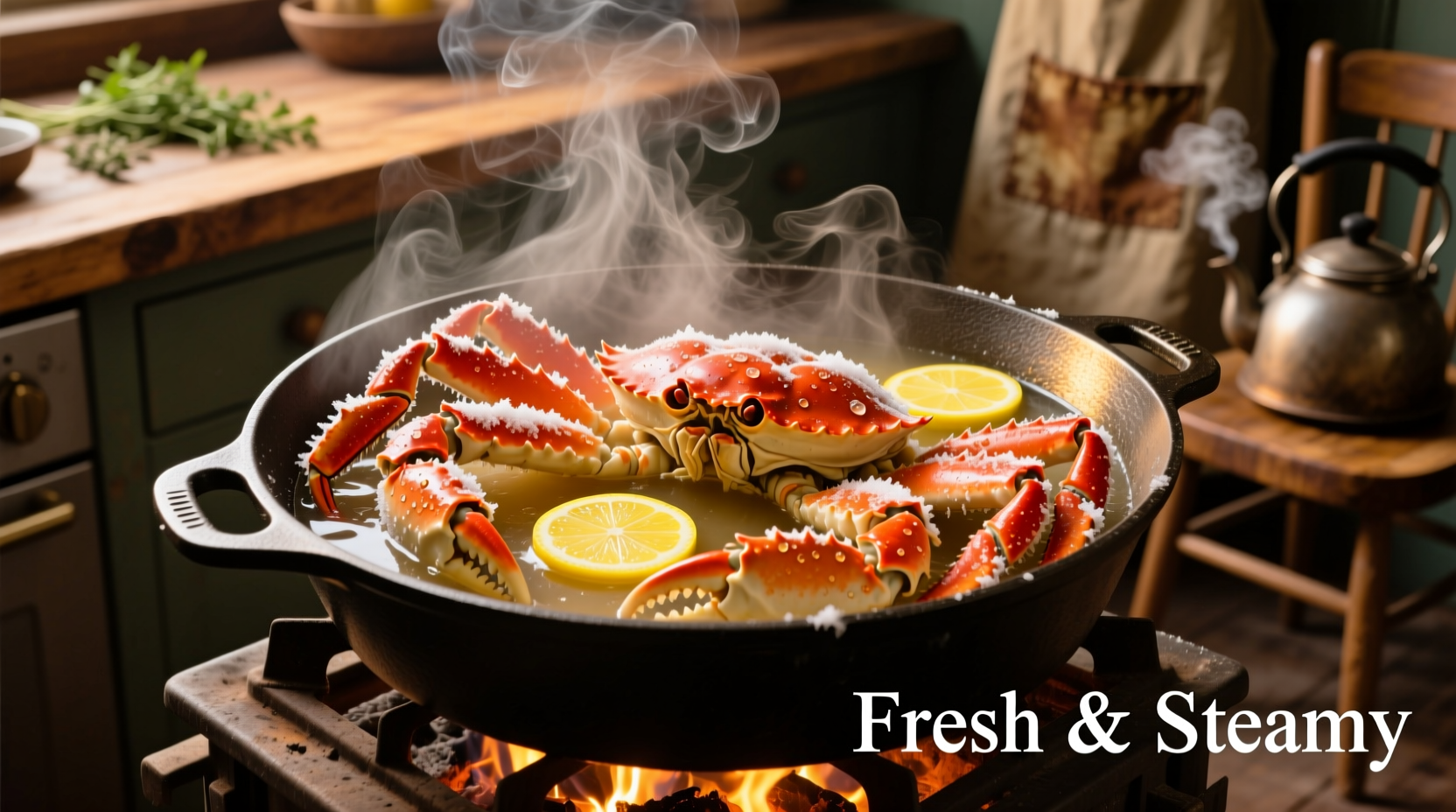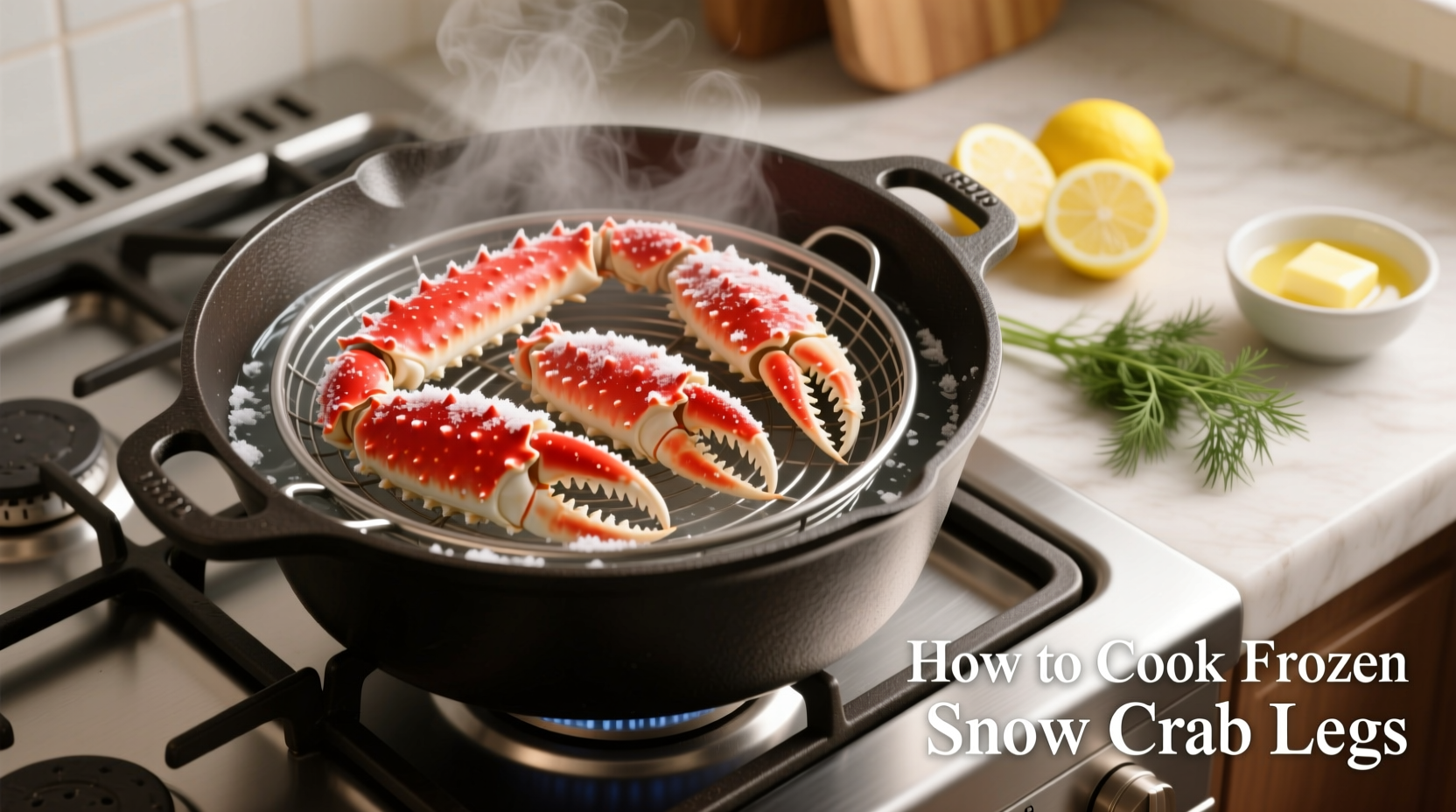Perfectly cooked snow crab legs should be tender, juicy, and full of that sweet ocean flavor you're craving. Many home cooks make the mistake of thawing frozen crab legs first or overcooking them, resulting in rubbery, flavorless seafood. As a professional chef with years of seafood expertise, I've perfected the method that delivers restaurant-quality results every time—straight from your freezer to your table in under 15 minutes.
Why You Shouldn't Thaw Frozen Snow Crab Legs First
Contrary to popular belief, thawing snow crab legs before cooking actually damages their delicate texture. According to the U.S. Food and Drug Administration's seafood guidelines, cooking frozen seafood directly preserves moisture and prevents bacterial growth that can occur during improper thawing.
| Cooking Method | Time for Frozen Legs | Water Ratio | Best For |
|---|---|---|---|
| Steaming | 6-10 minutes | 1 inch water | Preserving delicate flavor |
| Boiling | 4-6 minutes | Covered with water | Quick preparation |
| Oven Baking | 15-18 minutes | N/A | Large batches |
Step-by-Step: Steaming Frozen Snow Crab Legs (Recommended Method)
Steaming is the superior method for cooking frozen snow crab legs as it gently heats them without waterlogging. The National Center for Home Food Preservation confirms that steaming preserves more nutrients and natural flavors compared to boiling.
- Fill a large pot with 1 inch of water and bring to a rolling boil
- Add 1 tablespoon of vinegar or lemon juice to prevent rubberiness
- Place crab legs in a steamer basket without overlapping
- Cover tightly and steam for 6-10 minutes (8 minutes for average 1-1.5lb clusters)
- Check for doneness: meat should be hot throughout with opaque flesh
- Remove immediately to prevent overcooking

Alternative Cooking Methods
Boiling Frozen Snow Crab Legs
While not ideal, boiling works when you're in a hurry. Use this method only when steaming isn't possible:
- Use a large pot with enough water to cover the crab legs
- Add 1/4 cup salt per gallon of water for flavor enhancement
- Boil for 4-6 minutes only—any longer makes the meat tough
- Immediately transfer to an ice bath to stop cooking
Oven Method for Frozen Snow Crab Legs
Perfect when cooking multiple clusters or when outdoor cooking isn't possible:
- Preheat oven to 350°F (175°C)
- Arrange crab legs on a baking sheet
- Wrap tightly in foil with 2 tablespoons melted butter and lemon slices
- Bake for 15-18 minutes until internal temperature reaches 140°F
- Serve immediately with additional melted butter
Critical Food Safety Information
According to the USDA Food Safety and Inspection Service, cooked crab should reach an internal temperature of 140°F (60°C) to be safe. Use an instant-read thermometer to verify—never rely solely on timing. Frozen crab legs are already cooked during processing, so you're simply reheating them, which reduces food safety risks compared to raw seafood.
Pro Tips for Perfect Results Every Time
- Never thaw crab legs before cooking—they lose moisture and flavor
- Season the water with Old Bay seasoning, lemon slices, or garlic for extra flavor
- Use kitchen shears to cut along the underside before cooking for easier eating
- Serve immediately with melted garlic butter and lemon wedges
- Leftovers keep refrigerated for 2 days—reheat gently in steam
Common Mistakes to Avoid
Professional seafood chefs consistently identify these errors that ruin otherwise good crab:
- Overcooking: Even 2 extra minutes makes crab rubbery
- Thawing first: Causes moisture loss and texture degradation
- Using too much water: Dilutes natural flavors
- Cooking in the packaging: Traps steam and creates uneven cooking
- Not checking internal temperature: Leads to inconsistent results
Serving Suggestions
Enhance your snow crab experience with these professional pairing recommendations:
- Butter blend: Mix equal parts melted butter, olive oil, and lemon juice
- Side dishes: Garlic mashed potatoes and roasted asparagus complement crab perfectly
- Wine pairing: A crisp Sauvignon Blanc or unoaked Chardonnay
- Garnish: Fresh parsley and lemon wedges add visual appeal
Frequently Asked Questions
Can you cook frozen snow crab legs without thawing?
Yes, cooking frozen snow crab legs without thawing is actually recommended. Thawing can cause moisture loss and texture degradation. Steam frozen crab legs for 6-10 minutes for best results.
How long should I steam frozen snow crab legs?
Steam frozen snow crab legs for 6-10 minutes. Smaller clusters (under 1 pound) need about 6 minutes, while larger clusters (1.5 pounds or more) require 8-10 minutes. The meat should be hot throughout with opaque flesh.
Do I need to add salt when cooking frozen snow crab legs?
Salt isn't necessary since snow crab legs are already cooked and seasoned during processing. Instead, add lemon slices, vinegar, or aromatics to the cooking water for flavor enhancement without overpowering the delicate crab taste.
How can I tell if frozen snow crab legs are cooked properly?
Properly cooked snow crab legs will have opaque, white meat that's hot throughout. Use an instant-read thermometer to verify the internal temperature has reached 140°F (60°C). The meat should separate easily from the shell when done.
Can you bake frozen snow crab legs?
Yes, you can bake frozen snow crab legs at 350°F (175°C) for 15-18 minutes. Wrap them tightly in foil with melted butter and lemon slices to prevent drying. Baking works well for larger quantities when steaming isn't practical.











 浙公网安备
33010002000092号
浙公网安备
33010002000092号 浙B2-20120091-4
浙B2-20120091-4